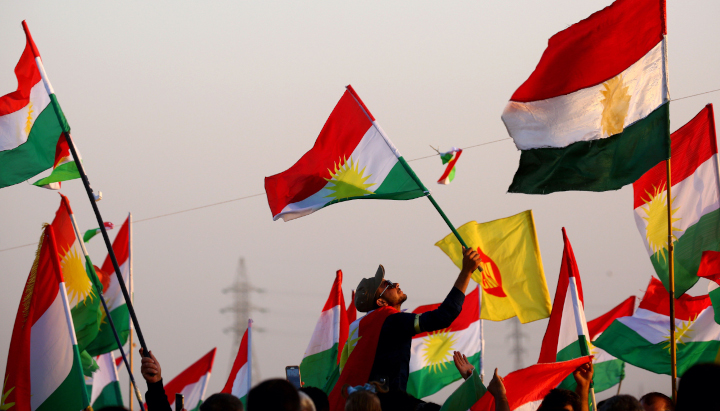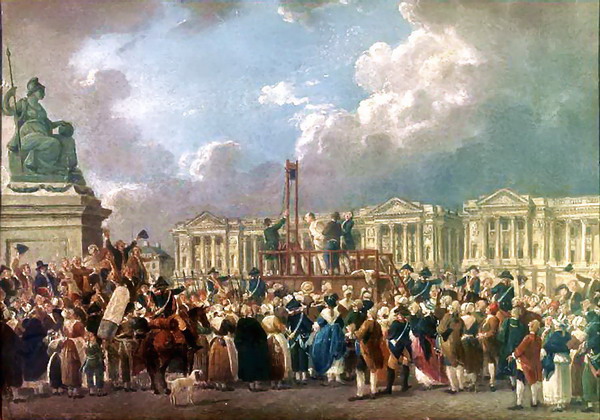Who was Mahatma Gandhi?
Mohandas Karamchand Gandhi (2 October 1869-30 January 1948) was an Indian politician and thinker. He is known by the nickname Mahatma Gandhi or Mahatma (the word Mahatma means “great soul”, comes from the Sanskrit forms -‘gran maha ‘and -‘ànima atma). He was one of the fathers of independence for the Indian nation and the disappearance of the British Raj using nonviolence.
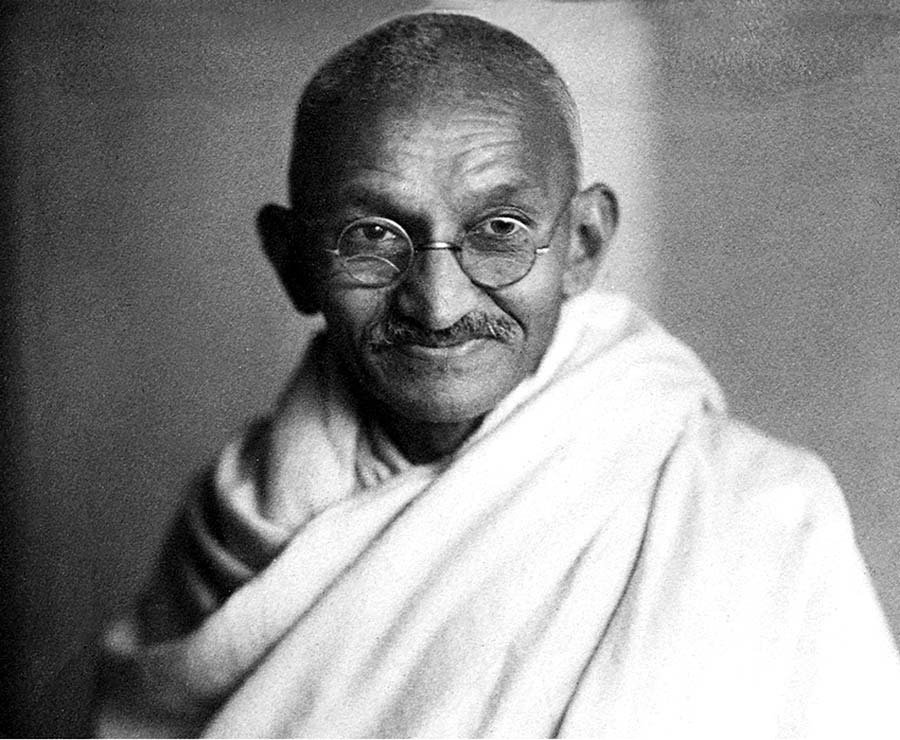
Gandhi was born in Porbandar (Gujarat state current), a coastal town in India. Her father was prime minister and his family were local caste vaisya (dealer). He studied law at University College London, and practiced law in Bombay (now Mumbai). His first works, realized in South Africa in 1893. While working for a company in this country, was interested in the situation of the 150,000 compatriots living there and fought against laws that discriminated Indians in SA (South Africa) through passive resistance and civil disobedience.
He returned to India in 1915 and in 1921 became the head of the INC (Indian National Congress). Established new methods of struggle (strikes and hunger strikes), and in its programs rejected armed struggle and preached non-violence as a means to resist British rule. He advocated total loyalty to the dictates of conscience, getting even civil disobedience if necessary; also fought to return to the old Indian traditions. He corresponded with Leo Tolstoy, which influenced his concept of nonviolent resistance. In stressed the Salt March, a rally across the country against the tax that was subject to this product. Jailed several times, Gandhi soon became an Indian national hero. In 1931, he participated in the London Conference, which claimed independence from India. He leaned in favor of the right of the Congress Party and, therefore, had conflicts with his disciple Nehru, who represented the left. In 1942, London was sent as an intermediary Richard Stafford Cripps to negotiate with the nationalists; but since it did not find a satisfactory solution, they radicalize their positions. Gandhi and his wife Kasturba were jailed: she died in prison while he conducted twenty-one days of fasting.
Its moral influence on the development of the conversations that prepared the independence of India was considerable, but the separation of Pakistan deeply discouraged.
Gandhi tried to reform the Indian society committed to integrating the lowest caste (Sudra or the ‘workers’, the pariahs or untouchables’ and mleccha or’ barbarians’) and to develop rural areas. Disapproved religious conflicts that followed the independence of India and defended Muslims in Indian territory, so he was assassinated by Nathuram Godse, a fanatic fundamentalist Indian, on 30 of January 1948, to the age of 78 years. His ashes were thrown into the river Ganges.
What did Mahatma Gandhi do for India?
The struggle for India’s independence (1915-45)
Gandhi criticized both the actions of the British Raj as the vengeful violence of Indians. He offered condolences to British civilian victims and condemning the riots which, after initial opposition party, was accepted following Gandhi’s deep and emotional speech advocating his principle that all violence was evil and could not be justified. After the massacre and subsequent violence, Gandhi began to focus on achieving self-control and control all institutions of the government of India and mature soon Swaraj or complete independence individual, spiritual and political.
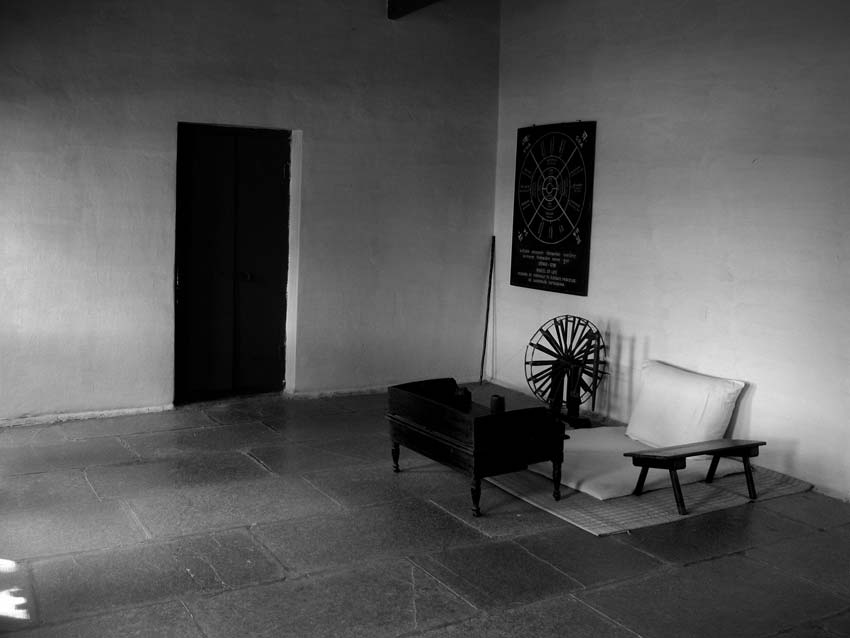
Room Mahatma Gandhi in Sabarmati Ashram. Wikipedia
In December 1921, Gandhi was invested with executive authority on behalf of the Indian National Congress. Under his leadership, the Congress was reorganized with a brand new constitution document, with the goal of Swaraj. Membership in the party was open to anyone willing to pay a symbolic price. A hierarchy of committees was set up to improve discipline, transforming the party from an elite organization of a national organization of the masses. Gandhi expanded his non-violence platform to include policy swadeshi -the boycott products manufactured abroad, especially British goods. Beside this, their defense that khadi (“homespun cloth ‘) would be used by all Indians instead of British-made textiles. Gandhi exhorted Indian men and women, rich or poor, to spend time each day spinning khadi in support of the independence movement. Gandhi came to invent a spinning small laptop that could be folded in size of a small typewriter. This was a strategy to inculcate discipline, dedication, to take the movement that wanted to do and not ambitious strategy to include women in the movement in a time when many thought that such activities were not adequate activities for women. In addition to boycotting British products, Gandhi urged the people to participate in the boycott on British educational institutions and law courts, in order to resign employment in government and renounce British titles and honors.
An example demonstrates the popularity of Gandhi, the importance of the participation of people in the movement for freedom and the words of Gandhi in the value of sacrifice. While popularizing khadi in rural Orissa, a poor woman who was listening to a speech by Gandhi made his way to where it was, it was his foot and put a copper coin in front of him. Gandhi accepted the money and thanked. He explained that Jamnalal Bajaj
“This coin was perhaps all that had poor woman. She gave me everything he had. That was very generous on their part. What a great sacrifice did! That’s why the value of this copper coin worth more than ten million rupees. “
The “non-cooperation” enjoyed wide acceptance and success, and increased excitement and participation from all strata of Indian society. However, just as the movement reached its apex, it ended abruptly as a result of a violent confrontation in the city of Chaura Chaura, Uttar Pradesh, in February 1922. Fearing that the movement was about to a turn towards violence, and convinced that this would ruin all his work, Gandhi called to let the massive civil disobedience campaign. According to Andrew Roberts, this wasn´t the first time Gandhi had canceled a campaign, “leaving in the lurch more than 15,000 followers, who were imprisoned for the cause.” Gandhi was arrested on 10 March 1922, tried for sedition and sentenced to six years prison. He began his sentence on March 18, 1922. He was released in February 1924 for an appendicitis operation; was in jail only two years.
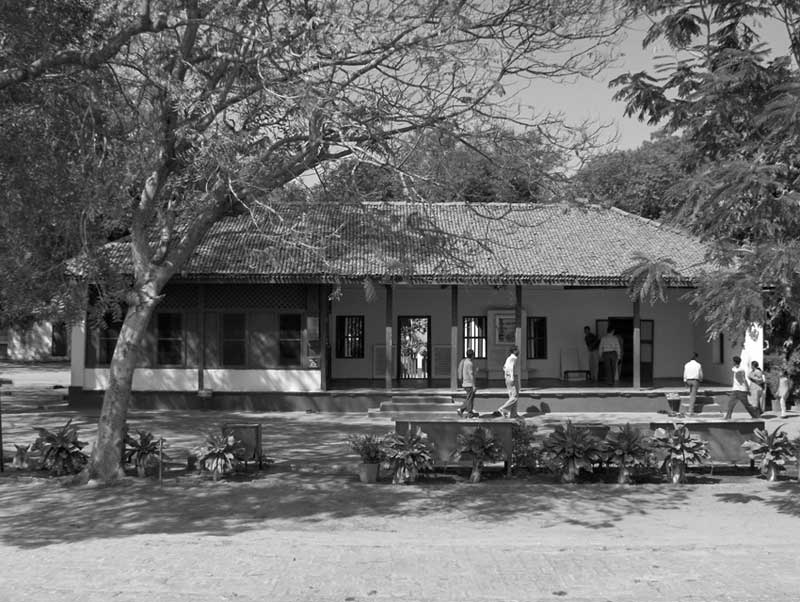
Sabarmati Ashram, Gandhi’s home in Gujarat. Wikipedia
Without the unifying personality of Gandhi, the Indian National Congress began to divide during his years in prison; the division is made into two factions, one led by Chitta Ranjan Das and Motilal Nehru in favor of the participation of the party in the legislature, and the other led by Chakravarti Rajagopalachari and Sardar Vallabhbhai Patel, opposing this movement. Furthermore, cooperation among Hindus and Muslims, which had been strong at the height of the campaign of non-violence, now sinking. Gandhi tried to save these differences with many media, including fasting for three weeks in the fall of 1924, but with limited success. This may have been due to the “genuine ability Gandhi had to irritate and frustrate “Muslim leaders in India.
The British arrested Gandhi and the Congress Working Committee, whole Mumbai on 9 August 1942. Gandhi was held for two years in the Aga Khan Palace in Pune. It was here that Gandhi suffered two terrible blows in his personal life. His old secretary Mahadev Desai, 50, died of a heart attack six days later and his wife Kasturba died after 18 months imprisonment in February 1944; six weeks later Gandhi suffered a severe attack of malaria. He was released before the end of the war, on May 6, 1944, because of his precarious health and because he needed to be operated; Raj did not want to die in prison and that this uprising were a rage in the nation. He managed to stop a delicate political situation -the Muslim League, for example, a few years earlier had appeared marginally, “now occupies the center of the political scene” and the theme of the campaign by Pakistan Jinnah was major talking point. Gandhi met with Jinnah in September 1944 in Mumbai, but rejected Jinnah (claiming that it would lead to full independence from Pakistan) proposal Gandhi of the right of Muslim provinces to opt for a substantial part of future political union.
Although the Quit India movement had moderate success in its objective, the ruthless suppression of the movement brought order to India before the end of 1943. At the end of the war, the British Empire gave clear indications that Energy would be transferred to Indian hands. At this point Gandhi called the fight and were released around 100,000 political prisoners, including the direction of Congress.
Independence and partition of India (1945-1947)
Gandhi advised the Congress not to accept the proposals of the Cabinet Mission Plan created by the British in 1946. I suspect that the idea of sharing power with the Muslim League and the divisions and decentralization implied that the plan was problematic. However, this time the party was opposed Gandhi accepted the idea of creating a government that would replace Britain as soon as possible and would prevent Mohammed Ali Jinnah and the Muslim League which received parity policy in the secular party Congress.
Between 1946 and 1947, more than 5,000 people were killed in confrontations between Hindus people and Muslims. The League was very popular in regions where there was a Muslim majority, such as Punjab, Bengal, Sindh, NWFP and Balochistan. The plan for the division of India was approved by Congress as a way to avoid a civil war indomusulmana scale.
The Congress leaders knew that although Gandhi was viscerally opposed the partition of India, was also practically impossible to accept the plan without the approval of Gandhi, because the support enjoyed throughout India was very strong. Sadar Patel, person of trust Gandhi was asked to get their consent to the plan of division.
Hindu and Muslim communities exerted great influence on Gandhi. His mere presence avoided and stopped disorders and riots. Vehemently opposed to any plan that would involve the partition of India. Moreover, the Muslim League hold that the numerical superiority of the Hindus systematically oppressed Muslim minority in a united India and that a separate Muslim nation was the better and probably the only solution. However, many Muslims in India were living together with Hindus, Sikhs, Buddhists, Christians, Jains, Parsis and Jews, and were in favor of the unity of India. But Mohammed Ali Jinnah had broad support in West Punjab, Sindh, NWFP and East Bengal, ie, all that is nowadays Pakistan and Bangladesh. On the transfer of the government, Gandhi did not celebrate as in the rest of India and was only on that day in his residence in Calcutta.
What Mahatma Gandhi do for India was very inspirational for others. His non-violent fight and the nonviolence term itself will always be associated with him
